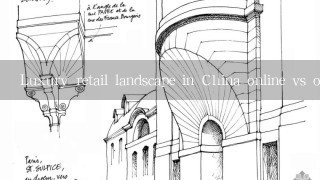Luxury retail landscape in China online vs offline channels?

Luxury Retail Landscape in China Online vs Offline Channels
China's luxury retail landscape is undergoing a significant transformation, with online and offline channels playing increasingly important roles in reaching and satisfying discerning consumers. Here's a breakdown of the key differences between the two:
Online Channels:
- Greater reach: China boasts the largest online retail market in the world, with consumers accustomed to shopping online for convenience and wider selection.
- Wider product range: Online platforms offer access to a vast array of luxury brands and products that might be unavailable offline.
- Lower barriers to entry: Consumers can browse and purchase luxury items without the need for physical store visits, making it more accessible for first-time buyers.
- Personalized shopping experience: Online platforms can leverage technology to provide personalized recommendations and virtual consultations, enhancing the customer experience.
- Lower price points: Online retailers often have lower overheads, enabling them to offer competitive prices, especially for luxury items.
Offline Channels:
- Physical store experience: Visiting physical stores offers a unique and immersive experience, allowing consumers to physically interact with the products, try them on, and experience the brand's ambiance.
- Authenticity verification: Physical stores often offer authenticity verification services, ensuring consumers purchase genuine luxury goods.
- Social interaction: Luxury brands often host events and exhibitions in physical stores, providing an opportunity for consumers to connect with the brand and other enthusiasts.
- Limited product availability: Physical stores have limited space and inventory, resulting in lower stock availability compared to online platforms.
- Higher price points: Physical stores typically have higher overheads, leading to higher prices for luxury items.
Overall, the luxury retail landscape in China is evolving rapidly, with online and offline channels complementing each other. While online channels offer greater reach and accessibility, physical stores remain crucial for providing a unique and authentic luxury experience.
Additional factors to consider:
- Luxury segment: Different segments within the luxury market, such as handbags, watches, and jewelry, might have varying online and offline preferences.
- Brand strategy: Luxury brands have different online and offline strategies, with some focusing heavily on online channels and others prioritizing physical stores.
- Consumer behavior: Consumer preferences and buying habits can also vary based on factors like age, income, and geographic location.
By understanding the strengths and weaknesses of each channel, luxury brands can develop effective strategies to reach and engage with their target audience in China.

















































